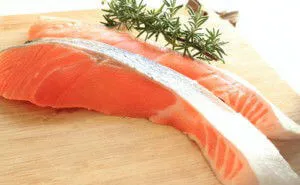
- Share on Facebook59
- Share on Pinterest
- Share on Twitter
Oxidative stress is caused by an imbalance between the production of reactive oxygen and a biological system’s ability to easily repair the resulting damage. But what does this mean exactly?
In all forms of life, a reducing environment can be found within the cells. This environment is preserved by enzymes that maintain their reduced state through a constant input of metabolic energy.
If there is a disturbance in this normal state, it can cause toxic effects, producing an overabundance of free radicals leading to damage of each component of the cell, including DNA, proteins and lipids.
In humans, oxidative stress is part of a wide range of disease and illness, including heart failure, Alzheimer’s disease, Parkinson’s disease and chronic fatigue syndrome. It is also thought to speed the aging process.
Studies have also found a link between oxidative stress and obesity. A study involving oxidative stress in overweight and obese Korean adults found that by treating these patients with a powerful antioxidant known as astaxanthin, it significantly improved their oxidative stress biomarkers by stimulating the antioxidant defense system.
Astaxanthin is a pigment that belongs in the carotenoid family; it’s what gives flamingos their vibrant orange-pink color and occurs naturally in certain microalgae. This microalgae is what is found in the primary diet of flamingos, salmon, shrimp, lobster, krill, crab and other marine animals.
It is thought to be even more potent than other antioxidants like beta-carotene, lutein and lycopene. It is even known to be 500 times more powerful than vitamin E and 6,000 times stronger than vitamin C. Astaxanthin is certainly not your everyday antioxidant.
It’s been hailed for its anti-aging properties, including preventing wrinkles and brown spots as well as even reversing years of skin damage. It can help treat or prevent a variety of cancers, diabetes, chronic inflammatory diseases, gastrointestinal conditions, slow the progression of Alzheimer’s disease, and a long list of other conditions, including obesity.
While there is no magic pill that can counteract a poor diet and inactive lifestyle, combining this powerful antioxidant with optimal nutrition and physical activity can boost your weight loss efforts. Many other studies are showing a link between losing stubborn fat as well as lowering triglycerides as well.
A study out of Tokyo, Japan found that mice which were fed a high fat diet but supplemented with astaxanthin were able to reduce fat tissues and improve blood fatty acid levels. Researchers concluded that the antioxidant could be helpful with metabolic syndrome and other issues related to obesity.
The richest sources of astaxanthin are found in certain types of marine algae; it is also found in several types of seafood including salmon, shrimp, crab and lobster. Four ounces of sockeye salmon contains about 4.5 milligrams of astaxanthin, but choosing wild-caught and not farm raised salmon is important to avoid harmful toxins. Carrots, red peppers, and other red-pigmented vegetables and fruits also contain astaxanthin.
 Wild Pacific salmon, especially the sockeye, are known to contain the highest levels of astaxanthin, but you’d have to eat salmon every day in order to reap its benefits, which means taking a supplement may make sense for many people. Varying amounts have been suggested but most studies to date have used between 2 and 10 milligrams per day; optimal doses have not been set for any condition.
Wild Pacific salmon, especially the sockeye, are known to contain the highest levels of astaxanthin, but you’d have to eat salmon every day in order to reap its benefits, which means taking a supplement may make sense for many people. Varying amounts have been suggested but most studies to date have used between 2 and 10 milligrams per day; optimal doses have not been set for any condition.
Shop wisely in order to ensure that your particular brand has undertaken all the special precautions to harvest it properly, purify it, encapsulate it and protect its potency right up to the expiration date on the bottle. You can find astaxanthin supplements at many health food stores nationwide.
With so many powerful health benefits, astaxanthin should certainly be added to the list of supplements you’re taking, whether you are overweight or not.
-The Alternative Daily
- Share on Facebook59
- Share on Pinterest
- Share on Twitter

